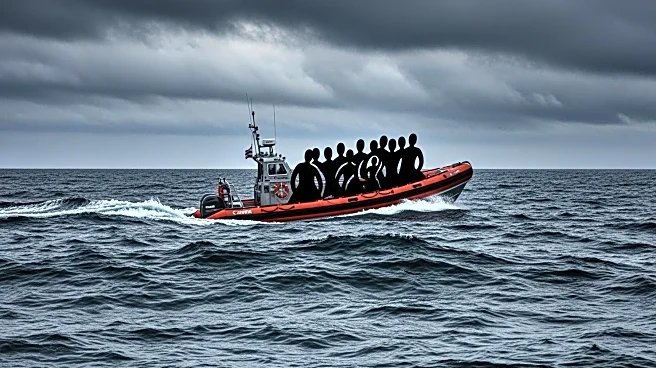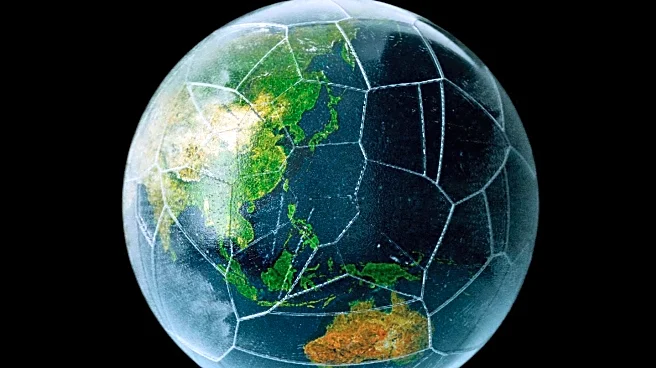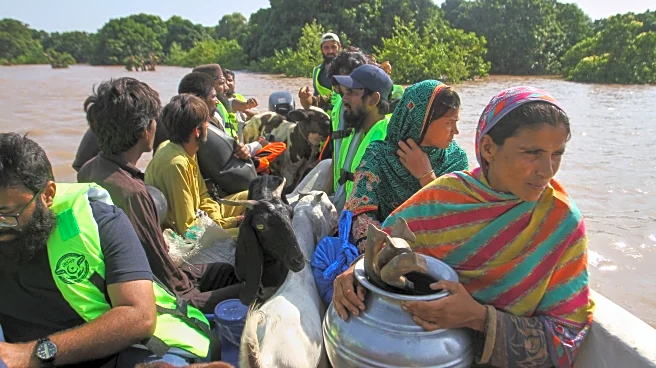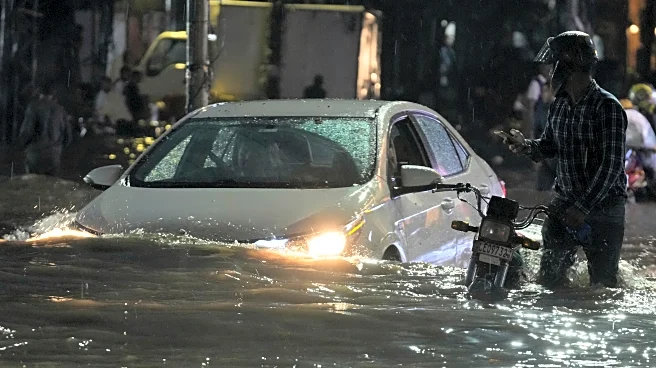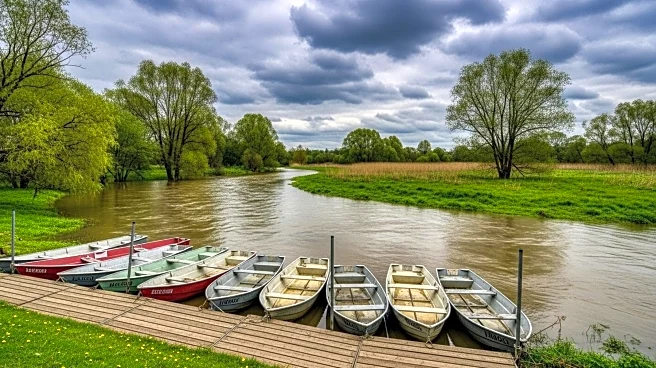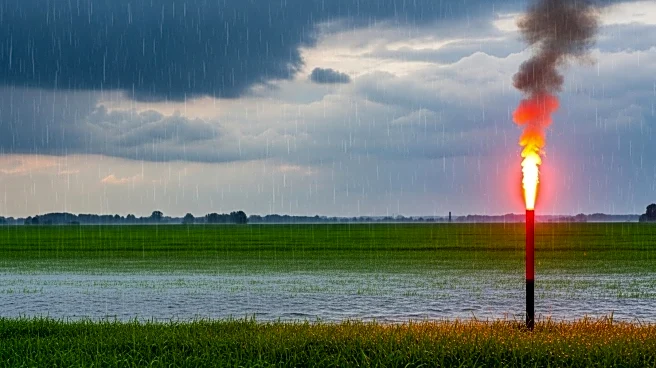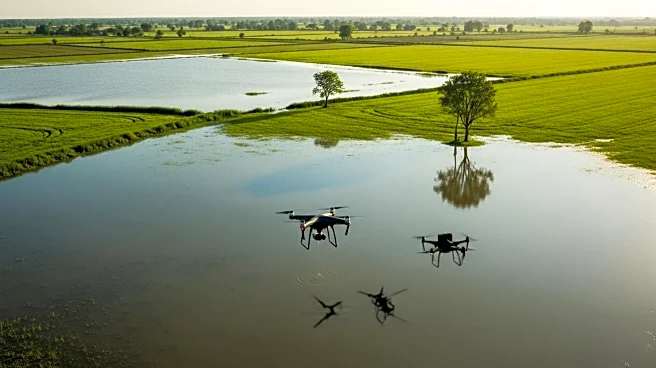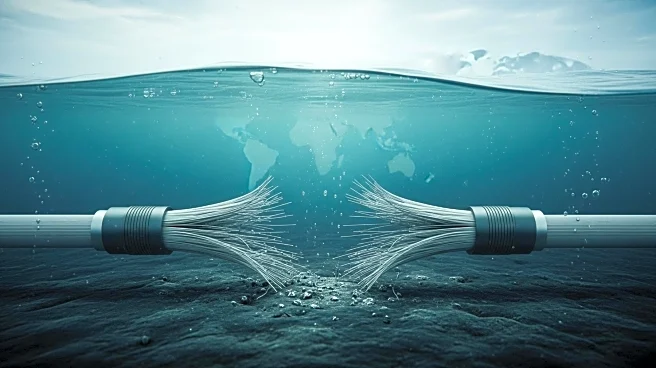What is the story about?
What's Happening?
Pakistani officials have evacuated over 25,000 people from Jalalpur Pirwala in Punjab due to rising river levels threatening to flood the region. The emergency operation began late Sunday and continued through the night, moving residents from high-risk neighborhoods to safer areas. This comes after a rescue boat capsized, resulting in five deaths. The government has deployed hundreds of boats and thousands of rescuers to assist in evacuations. The Pakistan Markazi Muslim League, a volunteer group, is actively involved in the rescue efforts. Floodwaters have submerged villages surrounding Jalalpur Pirwala and are beginning to seep into the city itself. The Punjab government is utilizing thermal imaging drones to locate stranded individuals, and Saudi Arabia has delivered food and shelter kits to aid flood victims.
Why It's Important?
The floods have affected over 4.1 million people across Punjab, with significant damage to homes, roads, and bridges. The situation highlights the vulnerability of the region to natural disasters and the need for effective disaster management strategies. The government's response, including the use of drones and international aid, underscores the importance of technological and diplomatic resources in crisis management. The floods also pose a threat to agriculture and infrastructure, impacting the local economy and livelihoods. The ongoing evacuations and international support reflect the urgency and scale of the disaster response required.
What's Next?
Evacuations are expected to continue as floodwaters move downstream into the Indus River, threatening southern Sindh province. The Punjab government, led by Chief Minister Maryam Nawaz Sharif, is closely monitoring the situation. The Pakistani army, police, and rescue services are assisting with helicopter airlifts from remote villages. The government is likely to continue utilizing international aid and technological resources to manage the crisis. The long-term focus will be on rebuilding and strengthening infrastructure to prevent future disasters.
AI Generated Content
Do you find this article useful?
